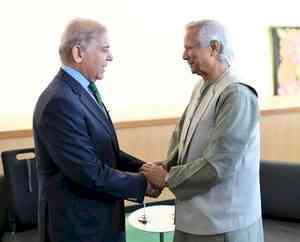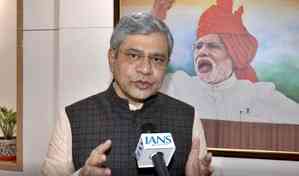Decoding the Mandate – A Tale of Regional Contrasts
The latest election results underscore the vibrant dynamism of Indian democracy, reflecting a complex interplay of regional aspirations and national narratives. From the NDA’s stronghold in Maharashtra to the UPA’s resurgence in Jharkhand, and the regional dominance of AAP and TMC, the outcomes offer valuable insights for political strategists and the electorate alike.

The latest election results underscore the vibrant dynamism of Indian democracy, reflecting a complex interplay of regional aspirations and national narratives. From the NDA’s stronghold in Maharashtra to the UPA’s resurgence in Jharkhand, and the regional dominance of AAP and TMC, the outcomes offer valuable insights for political strategists and the electorate alike.
Maharashtra and Jharkhand: A Study in Contrasts
In Maharashtra, the NDA, led by the BJP, delivered a stellar performance, securing a commanding majority with a three-digit tally. This outcome reinforces the BJP’s organizational strength and strategic alignment in one of India’s most politically crucial states.
Conversely, in Jharkhand, the UPA, buoyed by the Jharkhand Mukti Morcha (JMM), emerged victorious against the BJP’s expectations. The BJP’s inability to consolidate its position in the tribal heartland speaks to the UPA’s ability to address regional priorities more effectively.
By-Polls: Regional Players Shine
Punjab: AAP’s Resurgence and BJP’s Struggle
Punjab's by-polls highlighted the Aam Aadmi Party’s growing influence, with AAP securing three out of four seats. Its victories in Gidderbaha and Dera Baba Nanak—both previously held by Congress—signal a shift in voter sentiment. Congress salvaged a win in Barnala but must introspect on its losses.
The BJP, on the other hand, fared poorly in Punjab, polling an average of just 11.5% of the votes across constituencies—a steep decline from its 18% share in the 2024 parliamentary elections. The party’s struggles in Punjab, despite strong performances in other states, call for immediate course correction and an understanding of the local political fabric.
Heartland Success for BJP
In Uttar Pradesh, Rajasthan, and Madhya Pradesh, the BJP reaffirmed its dominance, performing strongly in the by-polls. This consistency reflects the party’s ability to connect with voters in India’s heartland despite challenges in other regions.
West Bengal: TMC’s Unwavering Hold
The All India Trinamool Congress (TMC) retained its grip on West Bengal, once again proving its mettle in assembly by-elections. Mamata Banerjee’s party continues to capitalize on its grassroots connect and regional narrative.
The Broader Implications
The results highlight distinct political trends:
- AAP’s Growing Momentum: AAP’s by-poll victories in Punjab could serve as a springboard for its campaigns in Delhi and upcoming municipal elections. Its ability to penetrate Congress strongholds marks a significant shift in regional power dynamics.
- Congress at a Crossroads: Congress faces an existential challenge in Punjab and beyond, with its declining vote share and inability to counter AAP in key constituencies. Strategic recalibration is imperative to halt further erosion of its base.
- BJP’s Mixed Bag: While BJP continues to excel in its strongholds, its lackluster performance in Punjab raises questions about its outreach in regions where it remains a peripheral player. Extending its membership drive in Punjab may help, but deeper engagement with local issues and stakeholders is crucial.
- SAD’s Diminishing Influence: The question of where Shiromani Akali Dal (SAD-B) votes have shifted remains pertinent, as its diminishing relevance reshapes Punjab’s political landscape.
Conclusion: A Mosaic of Aspirations
These results reaffirm the regional nuances of India’s electorate. For national and regional parties alike, the path forward requires a careful balance of grassroots connection, policy relevance, and an understanding of local sentiments.
The victory of AAP in Punjab is not just a morale booster but a signal of a changing political tide that could influence future elections. The BJP, despite strongholds elsewhere, must introspect on its Punjab strategy, while Congress must address its dwindling presence in key battlegrounds.
India’s political narrative continues to evolve, reminding us that every election is a referendum on governance, strategy, and the ability to resonate with the people’s aspirations.
Authored by:
Rajat Kumar Mohindru,
Journalist,
Jalandhar City.


 Rajat Kumar
Rajat Kumar 





